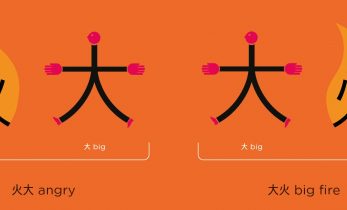Greater than 5 minutes, my friend!
Some possible if imperfect solutions to the problem of high cost patent translations
Translating patents from foreign languages into English can be a very expensive proposition. The high cost of patent translations, which may run to ten thousand and sometimes even tens of thousands of dollars, may seem like an insurmountable obstacle when for example a dozen patents need to be translated for information about relevant prior art.
There is no perfect remedy for solving the question of the cost of patent translations because translation of technical documents (such as patent applications) is labor intensive and takes time, especially if it is a long document, and some patent applications are very long indeed.
So what are the possible solutions for the high cost of patent translation?
1. Free Machine Translations of Patents
Free machine translations of patents have been available for a long time, about two decades, from several sources, including the EPO (European Patent Office) website, JPO (Japanese Patent Office) website, WIPO (World Intellectual Property Office) website and from other free resources.
Even when a machine translation is not available from one of these sources and only a PDF file can be found (for example if it is an old Japanese or German patent or utility model application), a PDF converter can be used to quickly convert the PDF file to digital form.
I use Adobe’s PDF converter which works quite well—although only for a limited number of languages—and costs 20 dollars a year. I can also run the converted file through a machine translation program such as GoogleTranslate or Microsoft Translator (Bing Translator).
The results of machine translation will vary, of course. The term “machine translation” is in fact a misnomer because what we are really getting from these and other machine translation programs are “machine pseudo-translations”, a jumble of words assembled and agglomerated based on algorithms, which means that the results are usually full of mistranslations. The result may in some cases even be an absurd and unusable text that seems to have been written by a madman, as I have described in many posts on my blog; for example in the post titled A Brief Comparison of Machine Translation and Human Translation.
But machine translations are still often helpful, and in any case, unlike human translations, they are generally free or cost next to nothing if ordered from a supplier of machine translations.
Machine translations (or pseudo-translations) usually make much more sense if the original document was written in a language that is similar to English, such as German, Dutch or French, while with languages that are very different from English, such as Japanese or Chinese, it may be very difficult to figure out from a machine translation what is in fact stated in the text in the original language.
Also, if a PDF file is converted to digital form, even the slightest mistake in the conversion, which often happens with old PDF files with poor resolution, will often make the machine pseudo-translation completely incomprehensible. Unless the legibility of the original Japanese patent application is perfect, the conversion is likely to generate inaccuracies in the resulting conversions to complicated Japanese characters because even the smallest change in the strokes of a character will result in a mistranslation. For example, the character 議 [“gi“, meetig] may be misread by the software as 護[“mamoru”, protect].
Nevertheless, machine translation can be a great help compared to the situation two decades ago when human translation was the only option.
2. Rush Rates and Non-Rush Rates
I see in my files that one long patent application about medical technology that I translated from Japanese some time ago had 62,817 words once I translated it. Since a good patent translator can translate 2,000 to 3,000 words a day, the translation of a single patent application by one translator would in this case take about a month, considering that at least two days would be needed for proofreading. If the translation is split between several translators, the result is unpredictable because even if the translators try to cooperate with each other with respect to the technical terms that they will be using, this cooperation could be quite problematic, especially when the translators do not have the same education, skills and experience, which is often the case.
Although splitting long patents between several translators is sometimes unavoidable, I believe that this solution should be used as a last resort, only if there simply is not enough time to make it possible to have the same translator translate the entire patent.
I remember that when I was one of several potential translation suppliers submitting a bid to a patent law firm for the long patent about medical technology mentioned above, I asked in my bid for a deadline of three weeks in exchange for my non-rush rate, which is significantly lower than my rush rate. My bid was accepted at the non-rush rate and I was able to finish the translation at a pace consistent with the limited amount of mental energy that is available to mere humans and that is required to produce good work. Since the amount of the mental energy that is required for concentration is not unlimited, the daily output in numbers of words that even a good and highly experienced patent translator can produce per day is in the real world also limited.
Because accepting a longer deadline for a translation project is one way to lower the cost of a translation project, when I am asked to provide a cost estimate, I always quote two prices: one for what I call “rush” and one for what I call “non-rush” translation. Agreeing to a reasonable deadline, (which takes into account the fact that most human translators can be reasonably expected to translate only a limited number of words per working day), is thus one way to limit the cost of the translation project.
3. Translation of Claims and the Text in the Description of Figures Only
This is yet another method that can be used to limit the cost of translations. Many clients who would balk at the price of, say, two thousand dollars, which is what it might cost to translate a single patent application of medium length, will not hesitate to spend about ten percent of that for a much shorter translation that will give the reader in most cases a much better idea of what is contained in the original patent application than a machine translation, which may be very misleading, because by definition, it is likely to be riddled with mistranslations and mistakes.
Yesterday, for example, instead of translating an entire patent application from Japanese, I translated only the claims and descriptions of Japanese text accompanying the figures at the end of the document, including the text describing the numbered parts in the explanation of figures explaining preferred embodiments of the invention.
Although the cost of this abbreviated translation was only about 10% of what it would have cost to translate the entire text of the patent application, the translation of claims and of the text explaining the figures was sufficient to provide a good idea about the essential design of the invention.
Although none of the solutions proposed in this post are ideal or perfect, one or several of them may still work if the budget available for translations is limited. What is important is to have access to a translation agency that specializes in patent translation or an individual patent translator with a lot of experience.
Generic translation agencies that claim to specialize in patent translation (in addition to every other field under the sun) do not really specialize in anything.
One look at a website on which a translation service claims to have hundreds or thousands of highly experienced translators available immediately to translate any subject in any field from and into any language is generally a good indication that this translation service is just a broker who probably has a lot of expertise in one thing and one thing only: how to buy low and sell high.




